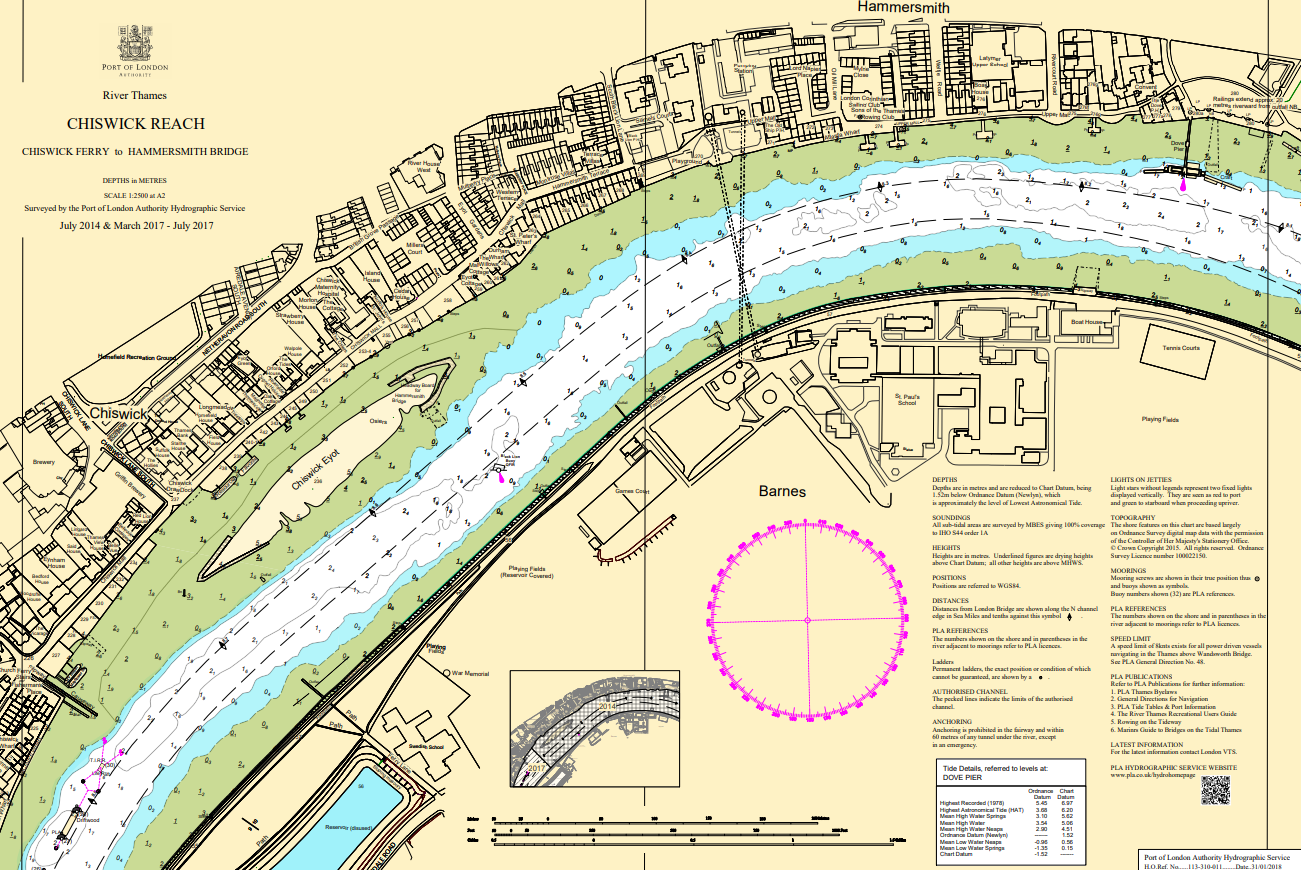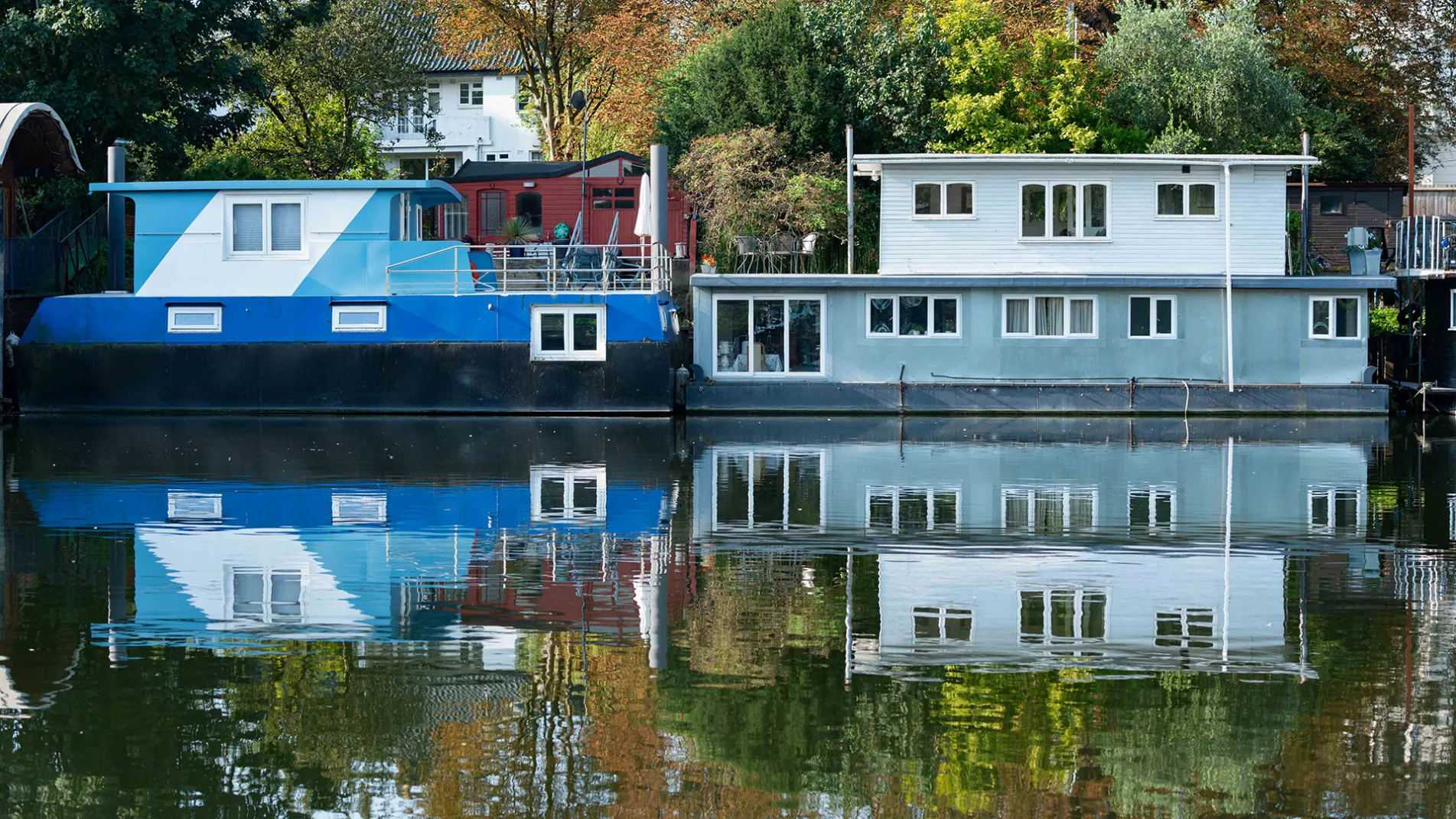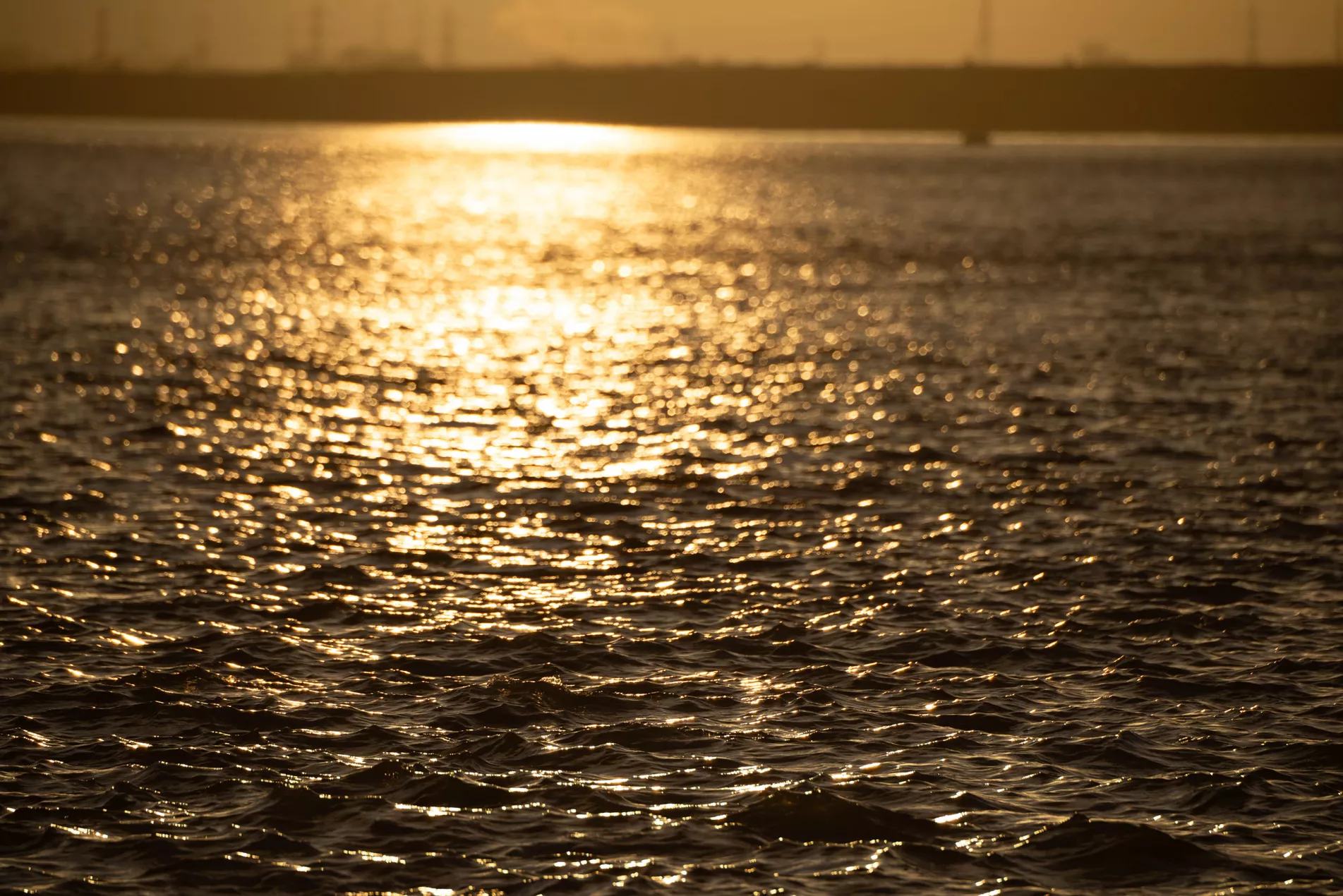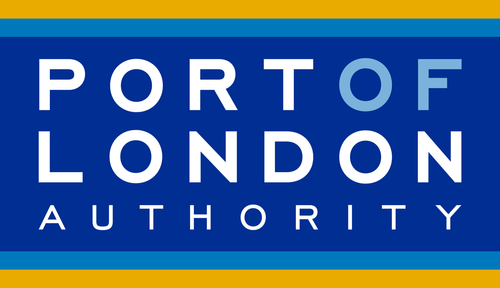Live Tides
NOTICES TO MARINERS
Charts & Surveys

Incident reporting
Life-threatening emergencies on the river:
Call 999 and ask for the Coastguard
For near miss, safety observations and incident reporting click below

Living afloat
Here’s our advice to having a home on the river that keeps river users safe, and protects the environment
The number of houseboat dwellings on the tidal Thames continues to grow. It can be a great lifestyle, but requires careful consideration of safety and environmental matters, particularly for those new to having a floating home.
Safety first
It’s important to remember that houseboats come in all shapes and sizes and are made from a variety of materials. They all behave differently.
Anyone who lives aboard a boat needs to be familiar with its individual characteristics and those of the mooring facility used. The following guidance is general in nature.
Likely water conditions
The Maritime and Coastguard Agency (MCA) classifies the tidal Thames from Teddington Lock to Gravesend as a ‘Category C’ waterway. This means you can expect wave heights of over one metre.
Downriver of Gravesend (a ‘Category D’ waterway) waves of up to two metres are regularly encountered.
The tidal Thames is the busiest commercial inland waterway in England. It also has a daily tidal range of up to seven metres, creating very fast currents. This all means that the water can be turbulent, requiring houseboat residents to take precautions. For example:
- Ensure adequate fendering — which protects your vessel and the mooring from heavy contact from passing Port traffic — and robust mooring provisions.
- Store all items on board securely – including pots and plants on the roof, as well as gas bottles, other chemicals and fuel, to prevent spillages and leaks that could damage the environment.
- The same applies to all fittings; movable items should be on a tether; cupboards should be locked, to prevent doors form swinging open, allowing their contents to fall out and potentially cause injury.
Moorings
There are limited mooring places available on the river for houseboats. New ones are hard to find.
When sourcing a new mooring, it’s a good idea to discuss with the owner the type of vessel you plan to put on it, as there may be restrictions. You should also check that the mooring has a valid PLA licence.
Types of moorings
There are two main types of moorings available on the tidal Thames:
Grounding out moorings sit closer to the river wall. As the tide ebbs, vessels will take the ground.
On the tidal Thames, the tide ebbs and floods twice every day. This creates the risk of debris floating underneath your houseboat, which could cause the vessel to sit awkwardly, or even penetrate the hull.
In some areas, the riverbed has not been levelled out. As a result, houseboats don’t sit upright or level when grounded. This could require boats to be modified to suit the local conditions and prevent objects on board from rolling or falling over.
Some grounding out facilities feature ‘campsheds’. That is a raised level of ground, which enables boats to sit upright and level, when the tide ebbs away. All campsheds require a river works license from the PLA. Tyres used to achieve the same effect are not appropriate, including for environmental reasons.
- Afloat moorings are more susceptible to ambient tidal conditions and the wash and draw off caused passing river traffic. This is why we recommend securing all moveable items on board, (see above), including TV sets, radios and other appliances, which all need to be tethered.
Mooring guidance
The PLA has produced a useful guide with support from the PLA’s Wash Forum, on how to moor your houseboat safely in strong tidal waters; it is strongly recommended that this guidance is followed. It can be downloaded here. If you require further advice on mooring best practice you can contact the appropriate district Harbour Master for advice.
Safety checklist
Here’s a checklist of safety practices equipment we advise having on board your vessel for use in an emergency.
A boat hook for a houseboat is versatile, serving not just for docking and mooring but also for retrieving items from the water, assisting with lines, and even pushing off from the dock or other boats. It should be robust enough to handle the weight and resistance of tasks it's used for, without being so heavy as to be cumbersome.
A VHF radio or mobile phone (kept in a waterproof case) are essential to keeping in contact with the shore. You must be appropriately qualified to use a VHF radio. The RYA offers a one-day short range VHF course.
These will help the emergency services deal with an incident. The plan should indicate the location of emergency equipment, shut-offs, dampers and sea cocks and note the where any gas canisters are kept.
Ensure that these are robust enough for the local conditions to prevent damage to your vessel and mooring.
It is essential to ensure you have smoke and carbon monoxide detectors fitted and have firefighting equipment available, such as a fire blanket in your galley. You should know where your fire flaps are onboard and how to operate them. They should be tested regularly. We recommend reading this UK government guide.
An optimal first aid kit is tailored to meet the specific needs of its intended use, whether for home, work, travel, or outdoor activities. However, there are essential items that should be included in every first aid kit to ensure it is comprehensive for treating minor injuries and ailments.
Basic supplies:
- Adhesive bandages (various sizes) for minor cuts and scrape
- Sterile gauze pads and gauze rolls for larger wounds
- Adhesive tape to secure gauze and bandages
- Antiseptic wipes or solution to clean wounds
- Antibiotic ointment to prevent infection
- Hydrocortisone cream (1%) for itching
- Sterile saline solution for flushing out debris from eyes or wounds
- Scissors and tweezers for cutting tape, gauze, and removing splinters or ticks
- Disposable gloves to prevent contamination
- Alcohol wipes or pads for sterilization
You need to ensure that you have back-up systems for pumping out water – bailer, bilge pump, bungs, etc. You should not rely on a single 240v pump. A spare 12v emergency pump set up, operating off batteries charged by mains and solar power, or an onboard diesel-powered generator, is recommended. Test your bilge pump regularly.
To rescue anyone who falls into the water, you need:
- lifebuoys, with light and lines.
- throwlines
- Every passenger should have an allocated lifejacket or buoyancy aid. They could save your life and are useless unless worn! They must be checked and serviced regularly too. There are many different types available. The RNLI has produced a useful guide. It is worth researching to find the most suitable for your type of vessel and use.
Remember too that a buoyancy aid will not turn you over in the water should you be unconscious; a lifejacket on the other hand is specifically designed to right you should you be unconscious and will keep your head above water until a rescue if effected.
Everyone on board should be aware of the muster location ashore.
Be sure you know where they emergency shut off points are and how to operate them. Make sure batteries, electrics, water, gas and fuel are clearly labelled, to assist others in the event of an incident. A powerful torch (ideally waterproof) is recommended, with spare batteries. Carrying a supply of glow sticks or battery powered lanterns is also recommended, to provide lighting in the event of a power cut.
They should be long enough to stretch from your boat to the bollard and back. Always carry spare too and have a sharp knife or axe available for cutting. They should comply with our Mooring Guidance.
Know where all your underwater hull openings are and test valves regularly.
- Lifebuoys (with light and lines) and throw lines
- Guard chains or rails on the mooring pontoon, along with grab chains and emergency egress ladder(s).
- Salt or grit to combat ice in winter.
Protecting the environment
We work hard to protect the environment of the tidal Thames. Houseboat owners can help prevent water pollution by following our guidance:
PLA Byelaw 49 came into force on 1 January 2015. The Byelaw prevents the discharge of sewage into the Thames from specified vessels, including houseboats, consistent with the continuing improvement of the Thames environment. Read the full Byelaw. Options for dealing with black water include: using shore facilities; plumbing to a sewer; on-board treatment; compost or cassette toilets; installing a tank and routinely pumping out to a suitable receiver. You can find more information on dealing with sewage at the dedicated pages on the PLA website.
Further information:
Grey water can have a detrimental effect on the environment. We recommend that only phosphate-free detergents are used, and advise that you use environmentally-sensitive washing products where possible. If possible, re-plumb waste water systems so that both grey and black water are diverted to the holding tank and then disposed of by plumbing to sewer, on-board treatment or pumping out to a suitable receiver. Read the full Byelaw.
Further information:
Even a thin film of oil can kill aquatic plants and animals. As a boatowner you are responsible for carrying out proactive maintenance to prevent fuel spills in the Thames:
- Regularly check your engine, seals, gaskets and hoses and fix any leaks.
- Put an absorbent sock in the bilge to soak up oil, and a drip tray under the engine.
- Fit a bilge filter that removes oil before the bilges are pumped.
Further information:
Even a thin film of oil can kill aquatic plants and animals. Please report oil spills, evidence of oil and incidents to the PLA (24 hours a day). Find contact numbers here.
If you plan to buy a vessel to make into a houseboat, check with the mooring owner and/or boatyard that they will allow works to be carried out on site.
Ensure your woodburner is installed correctly, with heat protection below and behind, and that the flue is safe and doesn’t leave carbon dioxide. We highly recommend installing a CO2 and smoke alarm.
Burning fuel in domestic wood stoves and coal fires is the single largest contributor to the UK’s national emissions of fine particulate matter (PM 2.5). The tiny particles in smoke can enter the bloodstream, causing long term health issues, as well as having immediate impacts on some people, such as causing breathing difficulties or asthma attacks.
Here’s how you can help:
- Consider installing solar panels or a small wind turbine to provide electricity and connect to shore power, where possible.
- Don’t burn wet wood.
- Follow the DEFRA Guidance.
- Stay abreast of legislation changes linked to the Government’s Clean Air Strategy.
- Follow local authority Smoke Control Area rules to reduce air pollution.
Ensure your waste is placed securely into a bin. Bags of rubbish left out for collection can be torn open by wildlife or be blown overboard by wind.
Personal care and cleaning products can contain microbeads. Washing clothes can release microfibres.
Collectively these are known as microplastics – tiny particles of plastics, smaller than 5mm, which can also be formed when larger plastic litter breaks down. Microplastics can be eaten by animals, from the smallest zooplankton to birds and mammals.
In 2018, the UK government banned the sale of rinse-off cosmetic products containing microbeads, but they are still allowed in some other products.
Please consider using “greener” alternatives that don’t contain harmful chemicals. See the Green Blue Business Directory, or consider readily available products, such as Ecover *.
Washing clothes less also helps. A full load, with a liquid detergent, at a lower temperature and gentler setting is thought to reduce microfibre shedding. Dry clothes outside, not in a dryer.
Filters such as the Guppyfriend washing bag*, the Cora Ball laundry ball* or other innovative products claim to trap fibres. Some newer washing machines have pre-installed microfibre filters.
* All information provided is current at the time of publication. Inclusion in this guidance does not imply endorsement by the PLA.
Over 120 species of fish have been found in the Thames; the estuary is an internationally-important winter location for birds. Our ecology map of the river provides more details.
Additional guidance
The Royal Yachting Association (RYA) publish a ‘Pocket Guide to Boating Knots’ as well as a full handbook, ‘Knots, Splices & Ropework’ available from their online shop.
You can see how to tie boating knots by searching on www.youtube.com and on internet sites like www.animatedknots.com.
Typically, houseboats have an out-of-water inspection every five to 10 years, to check on the condition of the hull. It is usually an insurance requirement.
A marine surveyor will generally attend and supply you with a report.
The vessel may be lifted out of the water, put into a dry dock, or taken to a drying out berth. Dependant on the vessel, it can be moved under its own power, or towed to an appropriate facility.
Most inspection facilities are operated privately.
The PLA operates a lift-out facility at Denton Wharf, near Gravesend two drying-out facilities in the upper reaches of the tidal Thames.
Traditionally, most houseboats do not navigate very frequently, therefore, it is vital check your vehicle thoroughly in advance.
Using a licensed towage operator, can make life a little easier for the less experienced mariner, as they can support you in moving your vessel for an out-of-water inspections, or to move to a new houseboat mooring. Click here for a list a of operators.
It’s important to remember to check their certification (tug and designated tow master): Is it in-date and suitable for the operation? Do they have adequate insurance?
Remember to secure all moveable objects on board before towage begins,
Even if being towed, it remains essential to wear your lifejacket. Click here for detailed guidance.
Discover


